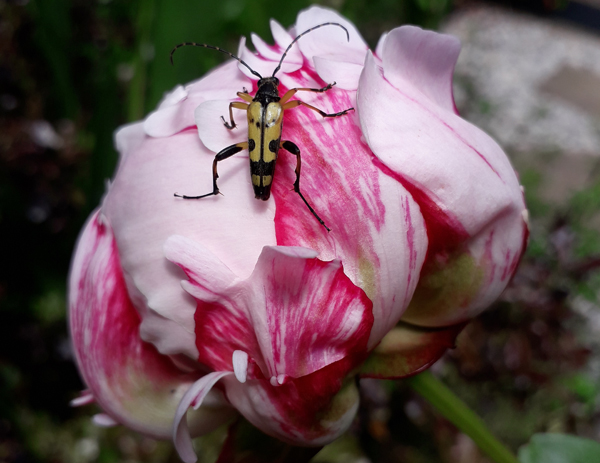Weeds and pests make for the perfect garden

Sounds strange, but bear with me. Living in a fast-paced world, it is so easy, when you have a garden pest or weed problem, to reach for a solution in a bottle, organic or not. Better still to adopt some tolerance to both these common garden issues, unless they reach vast numbers, as really, they are just acting as a small part of the eco-system that makes up your garden.
It is so easy to think of the beneficial insects, like bees and butterflies, we are encouraged to grow nectar rich plants for; the headline grabbers in the news with their declining numbers. But where does this leave other insects - the ladybird and lacewing. Well if you look hard enough you will find their food source in your garden. Aphids. Tiny sap-suckers, that target all that succulent new foliage and stems on just about any non-woody plant. Over 40 different species of ladybird in the UK seek out these juicy morsels, along with their voracious larvae. Adult lacewings, hoverfly larvae, parasitic wasps and some beetles devour them too. That’s a lot of insects looking for a snack. Continually spraying plants at the first sign of these pests can mean beneficial insects seek out other food sources. If given the benefit of a little bit of time, they would have done the work for you.
Birds such as blue tits help out too. One bird, apparently consumes a gargantuan 5,000 caterpillars and half a million aphids in the period of a year. They also help control scale insect, which is particularly stubborn if treated with chemicals alone.
Then of course there is the slug and snail problem. The average British garden is reported to contain over 20,000 slugs. They’ve got themselves a bad name as in actual fact it is only a small percentage eating your plants, the rest are minding their own, munching away on decomposing matter in the soil. Entice birds, frogs, toads and hedgehogs into the garden and they will manage these unruliest of molluscs for you, especially as slug pellets containing metaldehyde are to be banned as of next year.
If you don’t have a perfect lawn then autumn is a natural time of the year to try and get it back on track, but again tolerance of some ‘weeds’ goes a long way to creating a source of wildlife food. Dandelion is the carte de jour, flowering from spring until autumn; it is in flower waiting for pollinators as they emerge from hibernation. When they have finished the goldfinches and sparrows bolster their diet on the seed heads. If you can’t bring yourself to grow dandelions then devoting a patch of grass to meadow turf is becoming increasingly popular for its fauna benefits and low maintenance requirements. With so many different options of seed, turf or plug plant form and with mixes for sun, shade and bog, there is something for every garden no matter how small.
Primula veris is a good option as too is
Hyacinthoides non-scripta and Fritillaria meleagris. All can be planted now.
This year my garden has seen a vast array of diverse garden visitors including the Black and Yellow Longhorned Beetle, bats and a baby buzzard. Work in harmony with nature and you might just be surprised at what will visit your garden.